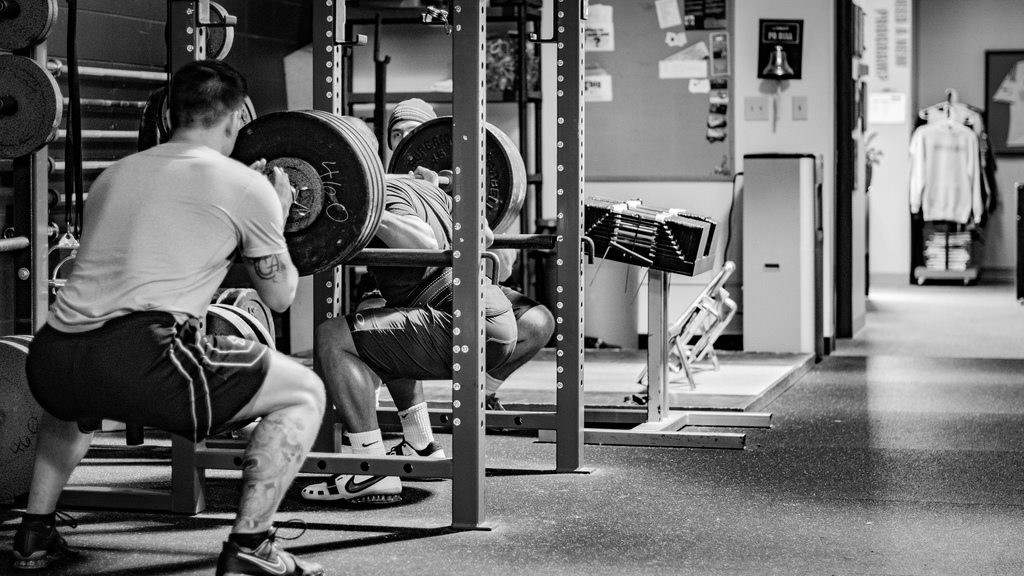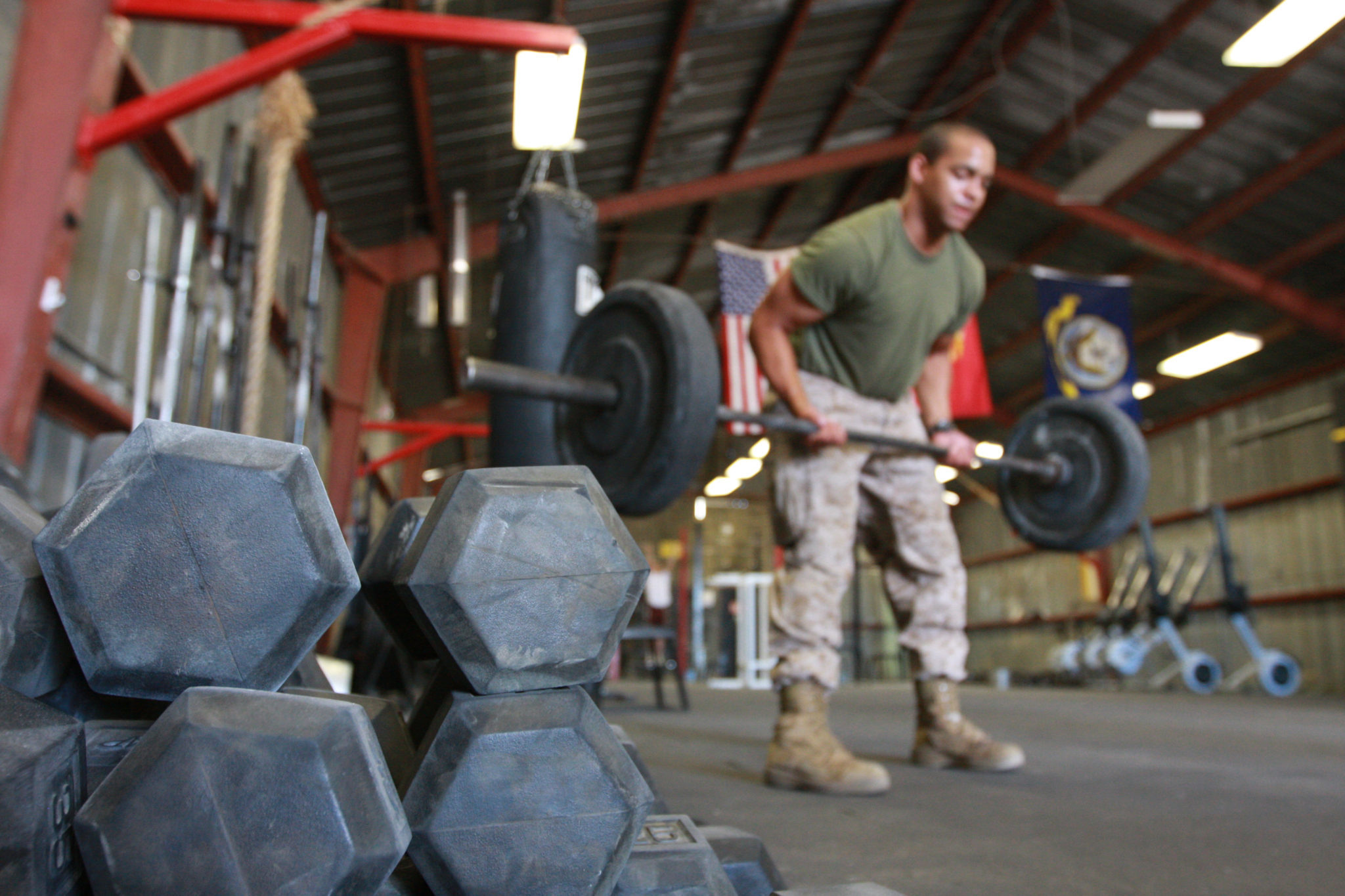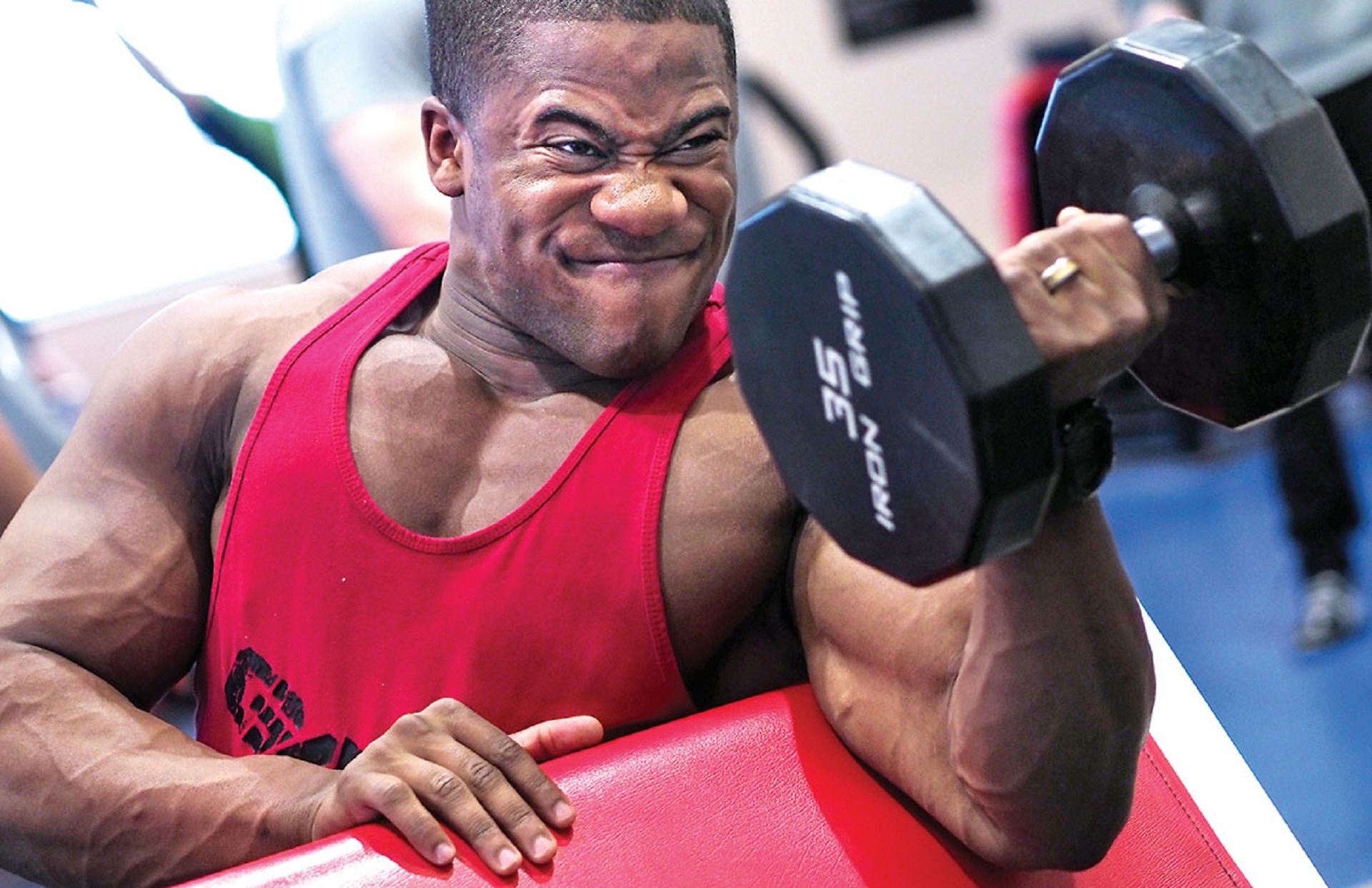| Training to Failure – What’s the Point? |
Set the Scene
Training to failure. The strange sadistic pain that you either learn to crave or learn to hate when it comes to exercise. The burning sensation, searing through muscles you didn’t even know existed…whilst the small voice inside of you (or the voice of your trainer) screams at you to keep pushing; beyond what you thought was possible; working and training to failure.
You have put the work in, it’s time to put the weight down and rest.
But hang on, you look around and see others in the gym, lifting until they physically can’t lift anymore. You see people training to failure in every exercise imaginable. Needing spotters for the last few reps before they slam the weights down after being defeated. Or succeeding in training to failure? Who knows.
But you find yourself wondering, am I not pushing myself enough? Should I be training to failure like others around me?
WHAT?
Learn the topic.
Training to failure was once the hallmark of the lifting world. With bodybuilders and other fitness professionals heralding it as the key to maximising muscle growth and progression. But have things changed and should we be training smarter as a result?
What is Training to Failure?
Training to failure, also referred to as ‘volitional failure’ refers to the inability to sustain an activity due to exhaustion/fatigue. More specifically in reference to lifting, we’re referring to the inability to sustain concentric contraction…or in other words, you can no longer lift the weight you are aiming to lift.

Where Did the Idea Come From?
Well straight out of the gate, just think about it logically. We live in a world where we’re constantly told to, “Never Give Up!”, swarmed by the array of motivational quotes about there being “No Plan B” and so on.
In addition to that, we’re told from a young age and throughout life, that the more effort we put into things, the more we will gain as a result.
This behaviour largely stems from our evolutionary biology and our Darwinian relationship with the rest of nature. It’s all about survival…and what does that entail? Working your arse off and continuing to push until you either succeed or die.
Military History
In the Western World, a large portion of our fitness, exercise and health knowledge initially came about due to both the 1st and 2nd World Wars, in which we looked to develop the fitness and physical potential of our soldiers.
It’s not surprising then, to find that there are a few lessons carried over from military style training into our current approach to exercise. You only need to look at your local leisure centre to find words like “Military Fitness” or “Bootcamp” to see this message resonate through.

Obviously, with this came the idea that we need to select only the toughest among us. Which meant, push until you can’t push no more. And this ideology, combined with certain bodybuilding philosophies has resulted in this, “Don’t leave anything on the table” kind of mindset.
Muscle Damage – The “Safety Net”
This is where I play the devil’s advocate. When looking to build muscle, it is a very costly process for the body to be in an anabolic state for long enough to form new muscle tissue. The idea being then, that you need to provide enough of a stimulus and have the right building blocks in place.
Think about when you’ve ever built an piece of furniture from IKEA. I can provide you with the raw materials (i.e. the shelves, the screws etc.) or in other words, the appropriate stimulus of lifting weights, but if you don’t have the instructions on how to do it (i.e. adequate protein intake, lots of sleep etc.) then you’re going to have a hard time ensuring you built the damn thing correctly.
Then flip that on it’s head. If you had all those other lifestyle factors in place and an appropriate sympathetic to parasympathetic balance, but didn’t have enough of a stimulus (i.e. the pieces themselves) then you’re definitely not going to build anything.
This led people to the idea that, “Well if I train to failure, then at least I know I’ve not left anything behind”. I’ve got more than enough pieces to assemble the muscle.
But is that the way it actually works?
Benefits of Training to Failure
Before we delve into the research too much, there are at least some benefits to be drawn from training to failure. It’s hard to argue with some of the greatest bodybuilders in the world (who also possess phenomenal strength), that it simply doesn’t work, no matter what.
The question is, is it necessary, effective or even a contributing factor to the results they achieve?
Training to failure, does bring a couple of benefits that people believe such as:
- Increased Mental Toughness
If you are someone who does not shy away from the concept of working hard, then this point isn’t referring to you.

But let’s face it, there are many people who partake in exercise who, initially don’t possess the grit and gristle that most people assume you need to lift weights. As exaggerated as it may sound, training to failure on occasion can show you who you really are and how you react when placed under immense stress.
Possibilility for Increased Strength
As you will read about shortly there is a bit of research to support the notion that training to failure does improve strength (although it’s far from that simple).
To add to this, the advocates of training to failure (or a least fatigue) use the argument of the Repetition Effort Method (RE) coined by Professor Zatiorsky (16). This initial idea stems from the Hennemann Size Principle in which when you lift a light load, as motor units’ fatigue, larger ones are recruited in their stead to maintain the force required to lift a weight (7).
*Note – Improvements in strength that do occur from failure training, may very well come from the idea that you’re simply working harder. Remember, effort and intensity are two entirely different things and where you may be thinking you’re pushing at 90%, you may actually be under performing significantly in training.
- Increased Metabolic Stress
As I have written about before when referring to the 3 Methods to Muscle, there is a huge amount of support for the use of failure training to increase the amount of metabolic stress that occurs and therefore, a mechanisms for building muscle mass as a result.
WHY?
Learn the science and theory.
Why does Failure occur?
Failure occurs for a very simple reason…fatigue.
Demand for energy to sustain an activity far outweighs supplies that can capably be provided by the body.
There are several types of fatigue, namely: Metabolic/muscular, endocrinological/adrenal and neurological. It’s rare that you will ever push yourself to the extent that neurological or adrenal fatigue are the limiting factors (unless you have been lifting far too heavy, far too often and disrupted your nervous system regulation), so metabolic/muscular is the main focus.
Why to Avoid Failure
Struggling to Recover
It’s essential to consider your own individual situation here. If you are a professional athlete who dedicates every waking moment to your performance (and doesn’t worry about anything else), then you can probably get away with training to failure a little more often. It won’t cause a huge amount of change. This unfortunately is where the issue tends to lie.
What do the Elite Do?
Most of us (myself included) when looking to improve muscle strength or size, turn to what the elite do. Bodybuilders may train to failure on a regular basis, but then have a full time job of handling their nutrition and recovery. So, we assume that we can do the same thing as them in the gym, yet have everything else going on in our lives that gets in the way.
And ironically, that’s only in reference to building muscle. When you speak to or research recommendations given by the strongest athletes on the planet, I can almost guarantee that non of them will recommend training to failure and that you should always stop a few reps shy.

If you’re anyone else besides an elite athlete, the research just simply doesn’t support the notion of “training like a beast” all the time (i.e. training to failure). Research has shown experiencing the other stresses of life, such as being at school, can directly impair your strength development (2) and increase your injury risk (9).
Now, true, I have spoken about the ability to utilise other exercise modes to facilitate your recovery and therefore not necessarily needing a de-load.
However, that refers to a situation when “normal” training (i.e. training that pushes you but not too the absolute limit) being a stressor.
When you then include a form of training such as training to failure, the sheer magnitude of your effort is more or less guaranteed to tip the scales a little too far in the direction of imbalanced training and recovery, regardless of what you do on the outside.

This has led to many researchers’ state that training to failure may be the cause of many states of overtraining and overuse injuries (13) in a wide array of sports.
It Hurts!
Now I admit, this is quite a soft comment and maybe I’m being a bit too nicey nice nowadays. But one of the huge barriers to get people to lift weights and engage in forms of exercise to make them healthier, is that they are exposed to the cult-like “Never Give Up, Never Surrender Mentality”. As mentioned at the start of this article, this leads people to believe that training to failure and pushing to the point of pain is the only way it can be done.
However, this simply won’t work for the more sensitive among us. And it doesn’t have to either.
“Pain changes Movement” – Gray Cook
Contrary and irrespective of what people would have you believe, pain changes the way you move. Unless you think you can completely override your body’s inhibitory, protective mechanisms (which is nigh on impossible), you can’t perform the same motor pattern when you’re experiencing significant amounts of pain.
Furthermore, pain is an entirely subjective experience (4). I may be quite soft on people here but when one-person training to failure may only experience discomfort, others may register it as pain…Altering their ability to effectively execute the task. A recent meta-analysis by Bank et al. (1) investigating the effect of joint/muscle and tendon pain on motor control concluded the following:
“Collectively, the findings show that experimentally induced limb pain may induce immediate changes at all levels of motor control, irrespective of the source of pain”
Now the key here, is I’m not stating you will be at a greater risk for injury. Although I do believe that’s a possible downside, there is no actual direct evidence to suggest that your injury risk is greater when performing sets to failure.
However, it does affect your ability to execute the same motor pattern efficiently and therefore, may not be as beneficial when looking to truly build your strength in the long run.
It Simply Isn’t As Effective for Strength
Alright tough guys. I get it. Talking about an inability to recover, pain and being soft might not compute with you. After all, the pain you experience in the gym can be half the pleasure, right?
Well I’ll give you another argument instead then:
Training to failure is not as effective as non-failure training for strength.
There is an ever-growing amount of literature showcasing non-failure training to be superior for strength gains when compared to training to failure (6, 8).

And, the idea (mentioned earlier) of recruiting larger motor units under fatigue, being the key benefit has been found to carry one major flaw. Research has shown that the “extra recruitment” of the higher threshold motor units under fatigue plateaus around 3-5 reps shy of failure (14).
Meaning you don’t get the “extra recruitment” in the repetition effort method in the final few reps anyway.
What about Research that shows Greater Strength Gains?
Well, as we have discussed previously, this is where training volume comes into play.
Although I won’t go into too much detail and it’s not as important as training intensity when it comes to building strength (12), training volume still has a significant role to play.
A concept known as maximal recoverable volume (MRV) is the idea that we should train within the limits of what we can maximally recover from and no more. For example, research by Drinkwater et al. (5), found significantly greater improvements in bench press strength when training to failure.
With this study however, it may well be that the training volume assigned was within the MRV of the subjects, despite training to failure occasionally throughout the training intervention. They didn’t control for training volume at all. So some subjects were training out of the gym and some only doing what was told to do in the lab.
At the end of the day, it’s about balancing what you can recover from.
It Simply Isn’t As Effective for Muscle Growth Either
A recent study by Burd et al (3), found that muscle protein synthesis was greater following low load, high volume training (30% 1RM to failure) when compared to heavy load, low volume (90% 1RM to failure).
Great! Case closed…right?
Well unfortunately not. The main issue here, is that this particular study only investigated acute (24 hours) changes in protein synthesis; but did not look at the overall hypertrophic response long term.

One of the major selling points of training to failure was, “It stimulates the release of anabolic hormones like growth hormone and testosterone”. However, research has shown that acute changes in hormones are only weakly correlated to muscle growth (10) and not correlated to strength at all (15).
Finally, recent research by Sampson et al. (11) found that training to failure over a 12 week period actually resulted in completing MORE WORK for the SAME response when compared to a non-failure training group. Kinda pointless right?
*In case you’re interested, the non-failure group in this study, performed the exercise with a rapid lift and 2 second lowering phase.
HOW?
Learn the implementation.
But, I Still Want to…
If you’re still adamant that you want to train to failure (or you want to use it as a method of incurring significant amounts of metabolic stress), then this is how it should be implemented.
Avoid training to failure on compound exercises and complex movements. You can get away with training to failure on isolation/simpler exercises (even in larger muscle groups early on in your training career).
If you can’t ensure optimal recovery, work shifts or admit to being a relatively stressed individual, then I would recommend to avoid training to failure altogether.
However, this is never going to be the case and most people will disregard this due to the borderline sadistic pursuit of self-inflicted pain. Fortunately there is a final way to get the few benefits that training to failure brings, without causing too much of an issue on your recovery.
Smaller = Faster
Larger muscles are capable of inflicting much more damage to themselves during strength training, and the opposite is also true. Smaller muscles, despite pushing them to the limits, will recover much faster than larger ones. Even if you perform an entire session on just training your arms, 24-48 hours later they will be good to go again.
Therefore, you can get away with going crazy and training to failure on smaller muscles (e.g. arms, calves, forearms, abs etc.) without negatively impacting the rest of your training cycle, increasing injury risk and the other downsides mentioned above.
Consider the Total Volume
What’s 3 x 10? 30 reps (Quick Maths)
Now, what’s ((1 x 12) + (1 x 8) + (1 x 6)) = 26 reps (Slightly Longer Maths).

Case 1 – Performed 30 reps and stopped 2 reps shy of failure on each set, but achieved a total of 30 reps.
Case 2 – Performed their first set to failure. But as a result, the fatigue meant that the next set, 8 reps was failure. And then the final set, they only achieved 6 reps before failing.
The first set for case number 2, messed up the rest of the training session and limited the overall volume they were able to achieve.
The point here, is if you are going to train to failure, in addition to only using isolation/less complex exercises with lighter loads, you should only go to failure on your final set. Otherwise it will negatively effect all of your subsequent sets.
Summary
- So, we know that training to failure doesn’t hold the answer that most people were hoping for.
- It doesn’t provide you with bigger gains in less time and it certainly doesn’t increase your strength.
- It can be used to give you slightly increased muscle size but only when balanced against your capacity to recover.
- Only ever go to failure on your final set. Never at the start of each exercise.







